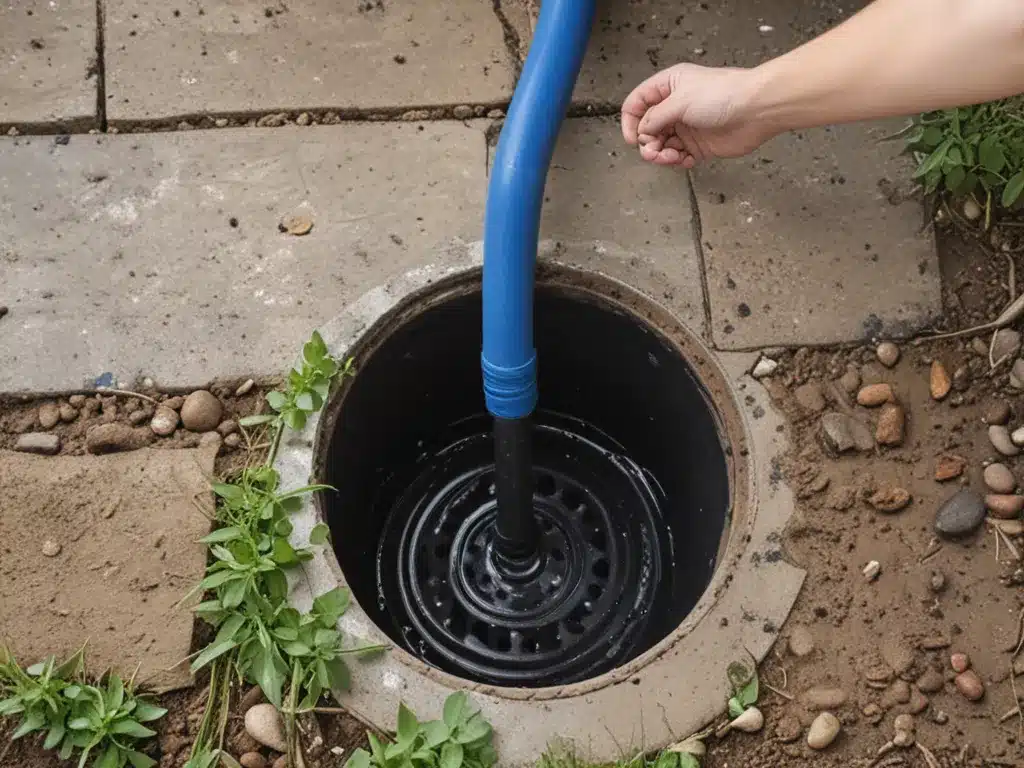As a homeowner, few things are more annoying than a clogged drain. Dirty water backs up, fixtures overflow, and you’re left with a soggy, smelly mess.
While chemical drain cleaners may seem like an easy fix, they come with serious downsides. Many contain caustic ingredients like sulfuric acid and sodium hydroxide that can corrode pipes and release toxic fumes. There’s also a risk of accidental exposure that can burn your skin or eyes.
Luckily, there are safer, eco-friendly alternatives for tackling clogs. With a few simple ingredients and tools from around the house, you can unblock drains without harmful chemicals.
Why Choose a Green Drain Cleaner?
Before diving into some DIY solutions, let’s look at why eco-friendly options are better for your drains, health, and the environment:
-
Avoid damage to pipes: Chemical cleaners are very corrosive and can eat away at plastic or metal pipes, causing leaks down the road. Green cleaners are much gentler on plumbing.
-
Prevent toxic fumes: Chemical fumes are not just unpleasant to breathe, they can also irritate eyes and airways. Drain cleaners like baking soda and vinegar have no harsh smell.
-
Reduce chemical pollution: Harsh cleaners shouldn’t be poured down drains where they can pollute groundwater. Green cleaners are non-toxic so they won’t contaminate waterways.
-
Easy to acquire ingredients: From kitchen staples to common tools, most eco-friendly cleaners utilize items you already have at home.
-
Better for septic systems: Chemical cleaners kill off beneficial bacteria in septic tanks needed to break down waste. Natural cleaners won’t disrupt this delicate ecosystem.
Effective DIY Drain Cleaning Solutions
Baking Soda and Vinegar
This classic combo uses the chemical reaction between an acid (vinegar) and a base (baking soda) to break up gunk and clear pipes.
How to use:
- Pour 1⁄2 cup baking soda down the drain.
- Follow with 1⁄2 cup vinegar. Cover the drain quickly as it will bubble up.
- Once bubbling stops, flush with hot water to rinse away debris.
Repeat as needed for tough clogs. The acids in vinegar dissolve buildup like hair and soap scum while baking soda scrubs away materials sticking to pipe walls. Together they break down and flush away the clog.
Boiling Water
For light drain blockages, a simple kettle of boiling water can do the trick. The heat melts and liquefies grease clogs.
How to use:
- Boil a full kettle of water.
- Carefully pour down the blocked drain. Limit to 1-2 gallons to avoid cracking pipes.
- Let sit for 15 minutes, then flush with cold water.
Repeat if needed. This cheap, fast method works well for small sinks but likely won’t have enough power to clear main drains.
Salt and Baking Soda
This abrasive combination scrubs away gunky buildup. The texture of salt, along with baking soda’s alkaline base, dissolves sticky substances.
How to use:
- Mix 1⁄4 cup salt with 1⁄4 cup baking soda.
- Pour down drain and let sit 30 minutes.
- Flush with boiling water.
The salt crystals scour the drain walls, while baking soda fizzles away oils and debris. Together they polish pipes clean.
Mechanical Removal
For severe blockages, eco-friendly physical removal methods are required:
- Plunger: Place over drain and plunge up and down rapidly to dislodge clogs. Cover overflow holes first.
- Snake: Feed the metal coil down the pipes to hook and extract hair, grease, and other debris. Use a hand crank or electric version.
- Zip-it: Insert like a snake to grab hair and gunk with its barbed plastic tip.
Preventing Future Clogs
To avoid recurring drain issues:
- Collect hair with drain traps and clean regularly
- Avoid pouring fats/oils down drains
- Only flush waste and toilet paper
- Install mesh strainers on shower and sink drains
- Use drain filters/protectors
- Periodically flush pipes with baking soda or vinegar
Following these tips and utilizing natural drain cleaners when needed will keep your drains free of clogs while also protecting your plumbing, health, and the planet.







